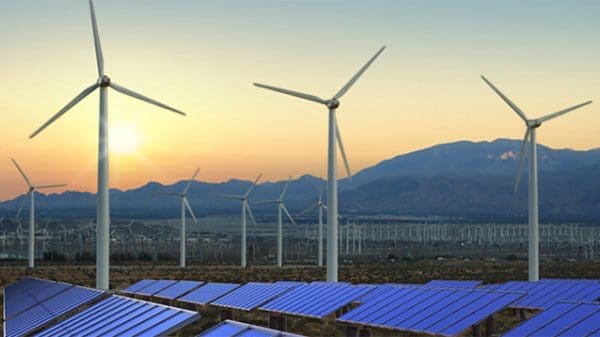Many large renewable generation projects and interconnectors are stalled because the
grid to which they would connect is weak and/or saturated, requiring hugely costly grid reinforcement before the renewables can be connected, which makes the project impractical.
Connecting More Renewables
However, if large-scale long-duration storage (such as Storelectric’s) is connected to the grid connection of an existing wind farm, another wind farm the same size can be connected without any grid reinforcement. For solar, two more can be added.
Alternatively, a brand new wind farm can be connected with a half-sized grid connection (solar, one-third). All of these options benefit the developer in many ways, such as:
- Halving (or reducing by two-thirds) the size of grid connection –
- Reduces capital costs for the renewables farm,
- Proportionate reduction in annual grid connection charges,
- Greatly reduces the grid reinforcement needed;
- ♦ Storage sharing the grid connection with the renewables farm –
- Eliminating its grid connection costs and annual charges;
- ♦ The renewables farm “sells” its energy to the storage, down a “private wire” –
- Eliminates grid access charges for energy sold by the wind farm,
- Eliminates grid access charges for energy bought by the storage,
- Gives a long-term PPA for both;
- ♦ The storage adds value-added services for the grid, including –
- Output energy is dispatchable rather than intermittent,
- Balancing services such as FRR and FCR
- Inertia, reactive power/load, black start etc. (see below).
Put another way, if there is an existing 100MW solar farm, adding 100MW storage would enable the addition of a further 200MW solar farm (100MW if wind farms) to the same grid connection – in addition to improving grid stability. This enables substantial increases in renewable generation even in locations with saturated or weak grids.
Inertia, Grid Stability etc.
Weak and saturated grids also suffer from low stability. This is often because wind, solar and interconnectors are all DC coupled to the electricity grid, and so have no natural inertia. For this reason, additional renewable generating capacity would merely make the problems worse. Storelectric’s CAES is naturally inertial and can therefore greatly improve grid stability, able to be designed with:
- Real inertia 24/7 at twice the rate of an equivalent-sized power station;
- Real reactive power and load 24/7 at ~6x the rate of a power station;
- Fault (e.g. short-circuit) current protection;
- Black start, if designed in at the outset.
Synergies with Interconnectors
When there is no demand across the interconnector, energy can still be transported for future needs if transported into storage. In the same way, it can still be bought and stored for future transportation against future needs.
If solar generation alone is connected to an interconnector, the volume of electricity carried daily can increase roughly 6-fold with storage between the solar farm and the interconnector. At the other end of the interconnector, storage can convert inertia-free baseload input into dispatchable output with natural inertia and reactive power / load.


